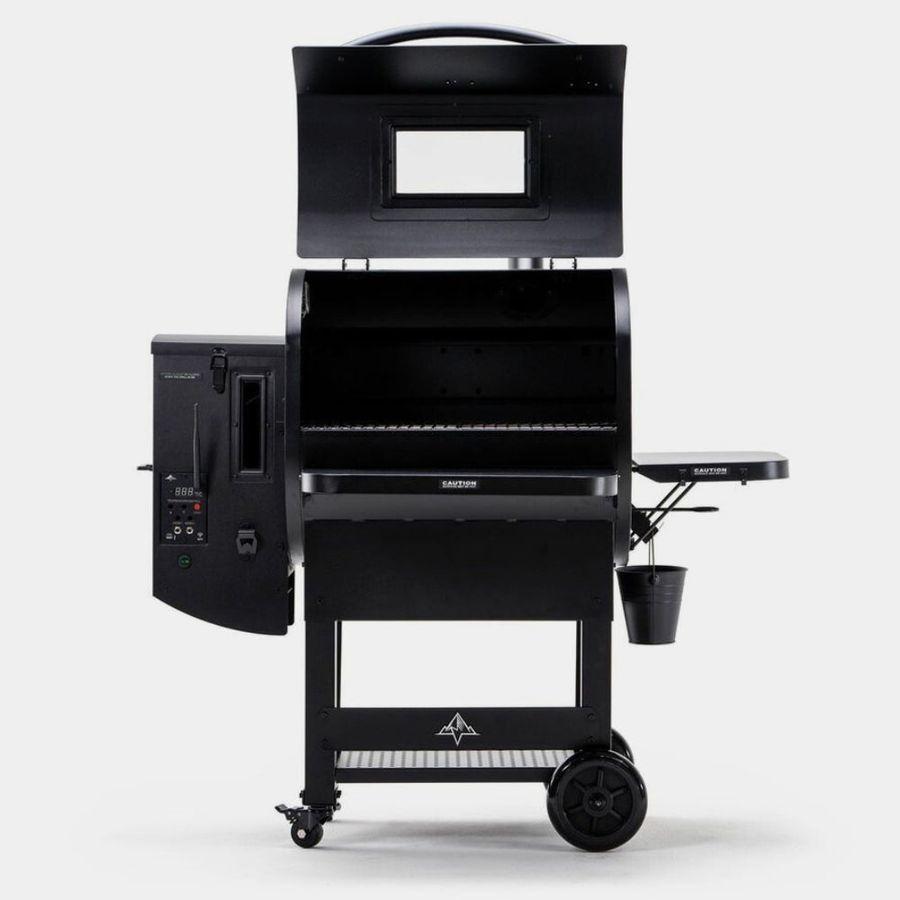Method
Step 1: Prep the Brisket
Trim the Brisket: Start by removing excess fat, but leave about 6mm (1/4 inch) of fat on the brisket. This helps with flavour and moisture retention during the long cook. Trim off any hard fat, silver skin, or thick seams of fat that won't render down. Focus on evening out the fat cap, and consider removing the point from the flat if you're after a more even cook.
Apply a Binder: Mustard is a great binder for brisket. Spread a thin layer of yellow mustard over the entire surface of the brisket. This doesn't add much flavour, but it helps the rub stick to the meat, ensuring an even coating and a better bark. Don’t worry about the mustard flavour—it'll cook off and leave only the rub flavour behind.
Season the Brisket: For a simple and classic Texas-style brisket, use kosher salt and freshly cracked black pepper in a 50:50 ratio. If you prefer a more complex flavour, we recommend Four Monkeys BBQ Home Base Rub. Apply the rub generously, making sure to cover every surface of the brisket. Let the brisket sit at room temperature for 30-45 minutes to let the rub set into the meat.
Step 2: Prep the Hark Chubby Offset Smoker
Fuel: Fill the firebox with Ironbark wood chunks. This dense, slow-burning wood adds a beautiful, smoky flavour that pairs perfectly with brisket. Ironbark burns hot and slow, giving a consistent temperature ideal for low-and-slow cooking.
Get the Smoker to Temp: Preheat your Hark Chubby to a consistent low-and-slow cooking temperature of 225-250°F (107-121°C). Use a thermometer to monitor the temperature and ensure it stays steady.
Wood Smoke: Once your smoker has reached the target temp, add a couple of wood chunks to maintain a consistent smoke. Make sure the smoke is light and thin. Thick, white smoke can make the brisket bitter.
Step 3: Cooking the Brisket
Place the Brisket on the Smoker: Place the brisket fat-side up on the grate. The fat will melt and baste the meat, keeping it moist during the long cook. Close the smoker and maintain a steady temperature of 107-121°C (225-250°F) throughout the cook.
Spritzing: After about 2-3 hours, start spritzing the brisket to keep the surface moist and help develop the bark. A mix of 50% apple cider vinegar (ACV) and 50% water is ideal for spritzing. You can also add a splash of apple juice or beer for extra flavour. Spritz the brisket every 45 minutes to 1 hour until you wrap it. Keep the spritz light, using a fine mist, not a heavy soak.
The Texas Crutch: After about 5-6 hours, or when the brisket reaches an internal temperature of 71-77°C (160-170°F), it will hit the “stall” (a phase where the internal temp stops rising for a while). This is when you should wrap it.
Wrapping Options:
Butcher’s Paper: Wrap the brisket in pink butcher’s paper. This allows the meat to breathe while retaining moisture and gives you a firmer bark.
Aluminium Foil: If you prefer a softer, juicier brisket with less bark, wrap it tightly in aluminium foil. This traps all the moisture inside, making the meat tender and juicy.
Continue Cooking: Return the wrapped brisket to the smoker and continue cooking until it reaches an internal temperature of 93-96°C (200-205°F). This can take anywhere from 4 to 6 more hours, depending on the size and thickness of the brisket.
Step 4: Rest the Brisket
Once your brisket has reached the target internal temperature, remove it from the smoker. Let it rest for at least 1 hour. This is crucial to allow the juices to redistribute throughout the meat, ensuring it’s tender and juicy.
Resting Tip: If you’re not ready to serve immediately, you can wrap the brisket in a towel and place it in a cooler (no ice) to keep it warm for several hours.
Step 5: Slice the Brisket
Slicing: After resting, slice the brisket against the grain for the most tender results. The grain runs in two directions on a brisket—one along the flat and the other across the point. Slice the flat thinly for tenderness and the point thicker for a juicier, more flavourful bite.
Serving: Serve the sliced brisket on its own, or with your favourite BBQ sides like coleslaw, pickles, or potato salad.










